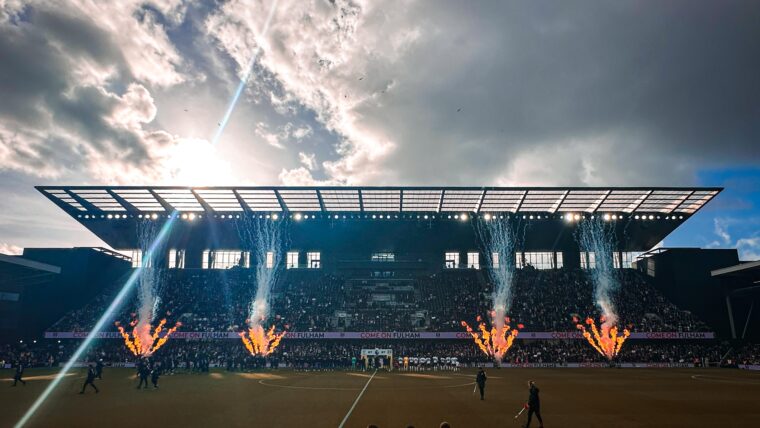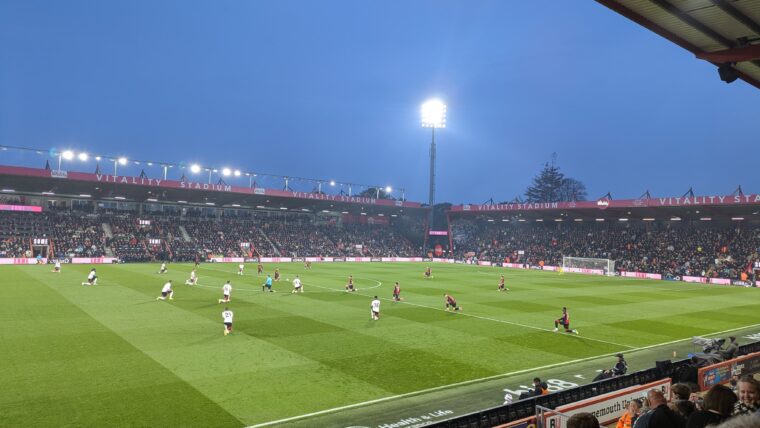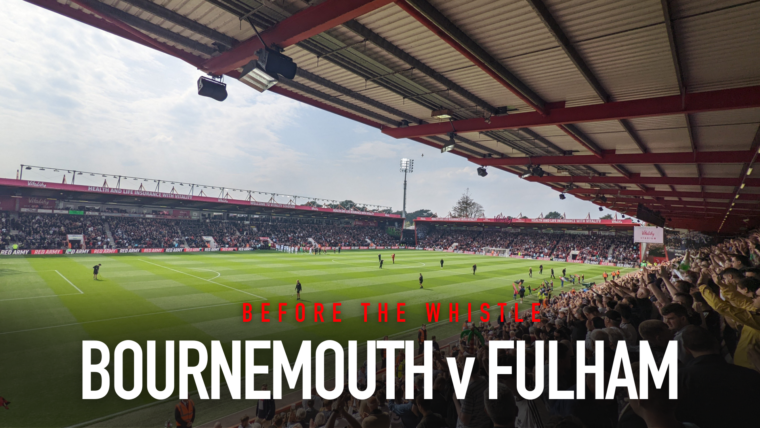Why Craven Cottage’s upgrade is more than just a stadium renovation
16th April 2025

Nestled on the banks of the River Thames, Craven Cottage has long been a cherished symbol of football tradition and charm. Now, its ambitious upgrade promises far more than modern facilities and added seating. It’s a transformative project that blends heritage with innovation for fans.
In this article, we will explore why this renovation marks a pivotal moment in Fulham’s history.
Preserving history while embracing the future
Upgrading a venue, while maintaining its unique character, and ensuring it remains relevant in a modern world, is essential. Preserving architectural features and cultural heritage fosters a deep sense of identity. At the same time, integrating contemporary amenities enhances functionality, comfort, and accessibility.
As per Fulham FC, in 1894, the Club (St Andrew’s Church) acquired Craven Cottage, and it took two years to renovate it. Volunteers pitched in to clear a derelict house and tidy up the area before constructing a clubhouse and changing room. The first historical match took place on October 10, 1896, when Fulham defeated Minerva 4–0 in the Middlesex Senior Cup.
The current Craven Cottage upgrade not only honours the past but also secures the stadium’s legacy for years to come. It is a living landmark that evolves without losing its soul.
Redefining the fan experience
Modern stadium upgrades are reshaping what it means to be a football fan, turning matchdays into immersive, all-encompassing experiences. With improved sightlines, expanded hospitality options, and state-of-the-art technology, fans are no longer just spectators, they’re active participants in the game.
Fulham News reported that Shahid Khan, Fulham’s owner, has invested millions to redevelop the Riverside Stand at Craven Cottage. The project began in 2019 to boost the stadium’s capacity from 25,700 to nearly 30,000. However, progress slowed due to the pandemic and rising costs. Despite setbacks, the redevelopment remains a key part of Khan’s vision for the club.
Enhanced food and beverage services, interactive spaces, and family-friendly zones will cater to diverse audiences and transform the stadium inclusively. These changes will foster deeper engagement, encouraging supporters to spend more time on the ground.
A tech-driven approach to modern football
Craven Cottage’s transformation includes visual enhancements and innovative designs to benefit players and fans alike. One standout feature is the use of fibrelastic turf, a hybrid surface that combines natural grass with elastic fibres. This blend enhances comfort, reduces stress on joints, and improves overall playability, to make it ideal for the demands of modern football.
However, as advanced as these surfaces may be, Fidra reports that some synthetic turf materials contain PFAS. These are persistent chemicals found in the plastic blades of artificial grass. Known as “forever chemicals,” PFAS have been linked to serious health issues, including cancer, immune system damage, and fertility problems, states TruLaw.
The rising concern around PFAS isn’t new. It’s being heavily spotlighted in the AFFF lawsuits. Exposure to PFAS in firefighting foam has led to widespread legal action and public health discussions. As football stadiums become more tech-driven, balancing performance with long-term safety will be essential in shaping the future of the sport.
Are there any plans to host non-football events in the renovated stadium?
Yes. The Riverside Stand will feature spaces like a café that locals can enjoy on non-match days. It will also include rooms available for conferences, offering scenic views of the Thames. The venue aims to be a multi-use destination for both sports and entertainment.
Sustainability and smarter design
Smarter stadiums use energy-efficient systems, sustainable materials, and advanced waste management to minimise their carbon footprint. Innovations such as rainwater harvesting, solar panels, and intelligent lighting not only lower operational costs but also reflect a club’s commitment to environmental responsibility.
According to Stadium Journey, Craven Cottage charms with its historic Johnny Haynes Stand, featuring 1905 architecture and original wooden seats. Season-ticket holders arriving early get £1 pints. Narrow turnstiles and a real cottage inside the players’ locker rooms below add vintage flair. A viewing balcony above for families makes it one of the most unique facilities in the league.
As fans and communities become increasingly eco-conscious, sustainable design enhances the venue’s reputation while supporting global climate goals. It’s a forward-thinking approach that ensures modern stadiums are built for both performance and the planet.
Craven Cottage as a community hub
Craven Cottage’s transformation goes beyond football, which positions it as a vibrant community hub. With the addition of spaces, event facilities, and improved accessibility, the stadium aims to serve as a year-round destination for social activities.
Euro News reported that the Craven Cottage’s Riverside Stand is a world away from a regular football stadium. It features a spa, a swimming pool, hotel rooms, a kids’ play zone, and Italian marble wash basins in the toilets. The idea is that the club will not only operate on match days but also function as a consistent presence within the local community.
It offers a shared space where people can gather, connect, and celebrate more than just sport. By opening its doors to the wider community, Craven Cottage strengthens local ties and fosters inclusivity. It enhances its role as a cornerstone of both Fulham Football Club and the neighbourhood it calls home.
Is open to the public on non-matchdays?
Yes, the Riverside Stand redevelopment includes amenities such as riverfront restaurants, a health club with a rooftop pool, and a hotel, all accessible daily. Additionally, a new riverside walkway passes through the stadium concourse, providing public access on non-match days.
A new era
Craven Cottage’s upgrade is more than just a facelift; it’s a thoughtful fusion of heritage and innovation. The stadium now offers an enhanced matchday experience while opening its doors to the community year-round.
With modern facilities, sustainable design, and expanded uses beyond football, it stands as a model for the future of sports venues. Fulham isn’t just preserving history; it’s building on it.



